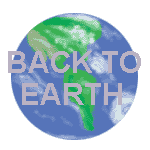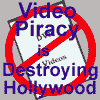
Places, Earth
Wilshire Boulevard, Will Travel
Wilshire Boulevard, Will Travel


|
Places, Earth
Wilshire Boulevard, Will Travel |

|
| Wilshire Boulevard is not the longest street in Los Angeles, that honor goes to Sepulveda Boulevard. It is not the oldest street in Los Angeles, that would be Olvera Street. It is however, one of the most important and historic streets in Los Angeles. In 1895, Gaylord Wilshire began developing a 35 acre tract of land west of down town Los Angeles and donated a 1,200 foot stip through the middle for the building of a boulevard bearing his name. Eventually, the boulevard was extended to include Orange Street from downtown to Westlake (established in the 1880s) in the east and on the west side, Nevada Avenue, established in the 1870s in Santa Monica, with the final section completed in 1934 as it was extended through Westlake Park. Wilshire Boulevard has been referred to as "Fifth Avenue of the West," and "Champs Elysées of the Pacific." Wilshire Boulevard runs sixteen miles west from downtown to the ocean, passing through three cities, Los Angeles, Beverly Hills, and Santa Monica. |
 Wilshire and Grand, the east end of Wilshire Boulevard. |
 Wilshire and Grand, toward Grand. |
| We begin our road trip at Grand between 6th and 7th (Saturday, 7:15 am - mile 0). This is the eastern end of Wilshire Boulevard where it begins, or ends, at Grand in a T-intersection. As we travel west, the first few block are within a man-made canyon of towering buildings, but within only a few | |
 Looking east toward Grand. |
 Looking west away from Down Town. |
| blocks, we pass over the Harbor Freeway, 110, and into the flat lands (mile 1). For most of our remaining fifteen miles, we will see mostly one, two, and three story buildings, with a few towers, mostly along the Miracle Mile and Westwood sections. |
 About to cross the Harbor Freeway traveling west. |
| Los Angeles, like many towns founded by the Spanish, is built forty-five degrees from the cardinal points of the compass. Many streets fan out in a northwest, northeast, southwest, or southeast direction, and then make a half left turn to travel west, north, south, or east. This makes a pin-wheel effect when looking at a map. Wilshire starts out heading northwest and makes its westerly turn at Hoover near Lafayette Park. For the next ten or so miles, Wilshire travels in a generally westerly direction. |
| Westlake Park became MacArthur Park in about the 1940s. In defiance of the Jimmy Webb song, MacArthur Park is not melting in the rain, but is still active and filled with people most days. As stated above, Wilshire Boulevard was completed when it cut through the center of this great park, slightly curving around the lake (7:30 am - mile 2). |
 MacArthur Park. |
| Also near MacArthur Park is the Elks Club, built in 1925 (Alexander Curlett and Claude Beelman). It once had 165 hotel rooms. It was later named Park Plaza Hotel and also served as a YMCA, retirement hotel, and other uses. |
| Wilshire Boulevard makes a turn to the west at Lafayette Park, a small community park (mile 2.3). Before long, we pass one of the most famous and popular structures along the boulevard. The beautiful Art Deco style Bullocks Wilshire building became an instant center of shopping when it opened in 1929. Designed by John and Donald Parkinson, it was dubbed a "Cathedral of Commerce" and was visited by most of the big names in Hollywood. It was the first department store centered around the automobile and could not have functioned profitably had it not been for the automobile and Wilshire Boulevard. When it closed in the 1990s, there was concern for its continued existence, but Southwestern University School of Law stepped in and wonderfully restored the building for use as its law library (mile 2.6). It looks like it will continue, unlike another landmark we will pass soon. | |

|

|
| Southwestern University School of Law Library, former Bullocks Wilshire. | |
| In 2005, the Ambassador Hotel lost its appeal and was sentenced to death to make way for a new LAUSD school complex. Demolition conclude in early 2006 and there is little left except a few small pieces saved for reuse. The Ambassador Hotel opened in 1921 and became a catalyst for the development of the entire Wilshire corridor. It was |
 Ambassador Hotel before demolition. |
| one of the two most important hotels in Los Angeles. The hotel had a nightclub that became famous as the Cocoanut Grove, a major gathering place for Hollywood greats. Every US president from Hoover to Nixon stayed there and Robert F. Kennedy was fatally shot in the Ambassador's kitchen. Soon, tens of thousands of Los Angeles students will be educated at the site. Originally LAUSD promised to maintain some of the historic elements, but during construction, these elements were also destroyed. Formerly at 3400 Wilshire Boulevard (mile 3). | |
 Ambassador Hotel after demolition. Even this was later demolished. |
 The new high school looks nothing like what was promised, except the size. |
| Across the street is what is left of one of the famed Brown Derby Restaurants. This once popular and famous restaurant was sacrificed to build a shopping center, preserving part of the dome. |
 What's left of the Brown Durby. |
| Within a few blocks is the Wilshire Boulevard Temple, (A. M. Adelman, S. Tilden, and David S. Allison), built in 1929. It features a 100 foot Byzantie dome and spires. It is located at 3663 Wilshire Boulevard. Wilshire Boulevard has the highest concentration of historic religious structures in the city. The Ebell Theater is across the street. A few blocks more and we reach our next landmark. |
 Wilshire Boulevard Temple, 8-6-06. |
 Hon-Michi Los Angeles Shutchosho, 8-6-06. |
| We cross Western, another major street in Los Angeles (mile 4). This was once the busiest intersection in the country. On the southeast corner is the Wiltern Theater. Built in 1929-31, this green terra-cotta Art Deco building is a landmark. The Pellissier Building/Wiltern Theater was conceived by Henry de Roulet, and designed by architect Stiles O. Clements of Morgan, Walls & Clements, with G. Albert Lansburgh designing the theater interior. |

|

|
| Wiltern at the corner of Wilshire and Western. | |
| A few more miles west, we enter the Miracle Mile section of the journey (mile 6 through 7). Here are some of the oldest skyscrapers in Los Angeles. A hundred years ago, we would have seen hundreds of oil wells lining the street and oil production is still conducted discretely behind disguising walls. |

|
| This section is also known as "Museum Row" as several museums are clustered in a small area east of Fairfax. In the late 1990s, six museums lined this three block stretch, now four remain. The owners of the Museum of Miniatures decided to retire and were unable to find a buyer. The Holocaust Museum closed without notice, leaving four museums operating today. |

|
| Although Hancock Park is home to two museums and the tar pits, there are also many acres of lawns and plantings. Several times a year, the park plays host to various festivals and events. Once a year, the Los Angeles Marathon runs past the park and the occasional parade includes the park. |
 Bastille Day 2006. |
 Bastille Day 2006. |
 G. Allan Hancock. |
| The largest museum along Museum Row is the Los Angeles County Museum of Art, LACMA to its friends, covering most areas of art in a complex of six buildings, including LACMA West. Founded in the mid-1960s, LACMA branched off the former Los Angeles County Museum of Science, Historical, and Art founded in 1913 in Exposition Park. Today, LACMA is the largest art museum west of the Mississippi River. |
 Entrance to Sculpture Garden. |
 LACMA West, the west end of LACMA at the corner of Wilshire and Fairfax. |
| A few steps away is the George C. Page Museum of La Brea Discoveries. As the name suggests, this small museum has the big job of discovering, cleaning, cataloging, storing, and displaying fossils and artifacts from the famed La Brea Tar Pits. This name is a poor choice for several reasons. La means The and Brea means oil or tar, so |
 Entrance to the Page Museum. | |
| The La Brea Tar Pits means, "The The Tar Tar Pits." And anyway, it's really a asphalt seeps, not tar pits. And don't go in and ask to see a Saber Tooth Tiger or you will get a lesson that it's a cat not a tiger. The asphalt seeps are available for viewing every day, the Museum is sometimes closed Monday, so check with the museum. This is the only actively explored fossil deposit in an urban setting anywhere in the world. Both LACMA and The Page are located at opposite corners of Hancock Park. | ||
 Mammoth. |
 Looking at the Japanees Pavillion across the Lake Pit. |
| Across the street is the Craft and Folk Art Museum (CAFAM) featuring crafts and folk art, what else. Founded in 1965, originally as "The Egg and The Eye" by the late Edith Wyle, the Museum opened in is present existence in 1974. |
 Craft and Folk Art Museum. |
| Two blocks down is the Petersen Automotive Museum featuring automobiles from throughout the 20th and now 21st centuries. The Petersen opened on June 11, 1994 as a branch of the Los Angeles County Museum of Natural History (as is the Page Museum) and became an independent museum six years later. The building contains about 300,000 square feet, much of it devoted to exhibits, mostly on the first two floors with a Discovery Center on the third. The Petersen sits on the southeast corner of Wilshire and Fairfax. |
| The northeast corner is occupied by LACMA West, one of the six buildings making up LACMA. Both of these buildings are rescued department stores. LACMA West was once a May Co, and the Petersen was another department store. They are both excellent examples of reuse, unlike the Ambassador Hotel. |
 LACMA West reflected off the Petersen Automotive Museum. |
| The northwest corner of Wilshire and Fairfax is occupied by the now closed Johnie's Coffee Shop. This 1955 building by Armet and Davis exemplifies the Googie style of coffee shops made popular after WWII. The restaurant still stands for now and earns its keep as an occasional film location. |

|

|
| Wilshire continues west and before long, crosses San Vicente and enters Beverly Hills (mile 7). If you never heard of Beverly Hills, you probably just arrived on this planet. Through most of the Beverly Hills, Wilshire Boulevard is lined with high end shops, shopping centers, restaurants, and offices. It is here that Wilshire trades places with Santa Monica Boulevard. Up to now, we have been parallel to Santa Monica Boulevard, about a mile and a half south. Now we cross Santa Monica and parallel about a mile and a half north for the rest of our journey. And that's why I get lost in LA. There is a beautiful and historic fountain, The Electric Fountain, near the intersection with Santa Monica (mile 10). Wilshire is a commercial street, most of the mansions that Beverly Hills is famous for line the streets that cross Wilshire. One commercial street that crosses Wilshire Boulevard in Beverly Hills is the famous Rodeo (pronounced "Row-day-oh") Drive (mile 9). |
 The Electric Fountain |
| A few blocks after crossing Santa Monica, we leave Beverly Hills (mile 30.5) and drive through Los Angeles Country Club and curve a little to the left and continue a little southwest toward Westwood. As we approach Westwood, Wilshire curves a bit through a section lined with tall condo and apartment buildings leading to the commercial blocks of Westwood. Westwood is adjacent to the |
 Westwood. That serpentine line of tall buildings is Wilshire Boulevard. UCLA is beyond (left center). |
| UCLA campus and has a college town feel - a big college town. Wilshire now passes the Federal Building, crosses Sepulveda Boulevard, the longest street in Los Angeles (mile 12), passes under the San Diego Freeway, 405, and passes the Veterans Administration Hospital. Part of the Veterans Affairs West Los Angles Healthcare Center is the Wadsworth Chapel, |
 Wilshire and Glendon, heading west toward Westwood. |
| designed by J. Lee Burton in 1990. The Victorian-styled Wadsworth Chapel is the oldest building along Wilshire boulevard. From here, Wilshire turns more sharply to the left and travels southwest toward Santa Monica. The street that started heading northwest is now traveling southwest, a full 90 degree left turn. |
 Wadsworth Chapel. |
| We enter the City of Santa Monica and leave Los Angeles behind (mile 14). Miles Memorial Playhouse, located in Christine Reed Park at 7th Street and Wilshire Boulevard, is a Spanish Colonial Revival building designed by John Byers in 1929. Now operated by the City of Santa Monica, it is home to a variety of organizations conducting cultural programming (mile 16). |
 Wilshire and Yale in Santa Monica. |
| As we near the end of our journey, we pass the north end of Third Street Promenade (mile 16). This is a three block section of Third Street that has been closed to vehicular traffic, running south to Santa Monica Place, a large shopping center. This is a California street, lined with stores, restaurants, and nighclubs, the street is filled with topiary, kiosks, and a weekly farmer's market. The Promenade is served by several public parking structure, but be forewarned, I've been stung twice in these structures, so be careful. Once I | |
 The north end of Third Street Prominade is Wilshire Boulevard. | drove in and saw the sign with "2 HOURS, FREE PARKING" in large lettering at the top and I hurried to be back within two hours because I didn't have much money with me. When I left, I had to scrape to find $5.00 because the fine print at the bottom of the sign said "$5.00 flat rate after 6:00 pm." A few years earlier, when the structures still had metered parking, I got a ticket with 15 minutes left on the meter. |
| We cross Second Street and we see the end to our journey. Wilshire ends at Ocean Avenue, only a few hundred feet from the Pacific Ocean (8:30 am - mile 16.2). Excluding a few stops for photos on this early Saturday morning, it took one hour to travel the 16 miles of Wilshire Boulevard. It would take a lot longer later in the day or on a week day. So find a place to park, if you can, and walk the last two short blocks to the beach, |  The end of the line, Wilshire Boulevard and First Street in Santa Monica. |
| or walk south four blocks and visit the Santa Monica Pier. We now shake the sand from our feet, get back in the car, and head on to our next adventure, on a Road Trip through Los Angeles. | |

|

|

|
| Note:This is not the official site for any of the places shown in Places Earth. Places Earth is not responsible for accuracy of the information. Hours of operations, prices, exhibits, and sometimes locations are subject to change without notice. |
|
Support this Web Site I hope that you find this web site helpful. It started because of my love for Architecture and interest in History and a desire to share my photographs and tales of my adventures. I don't allow paid advertising. This web site is for your benefit and enjoyment and I make no profit on it. For twenty years it has been supported primarily from my regular paycheck as a Set Designer. If you are in the need of a designer, please see my Set Designer portfolio site Set Design Portfolio. |
|
Links |

|
This site maintained by Kenneth A. Larson. Copyright © 2004 - 2023, Kenneth A. Larson. All Rights Reserved. Website content including photographic and graphic images may not be redistributed for use on another website. |

|

|

|